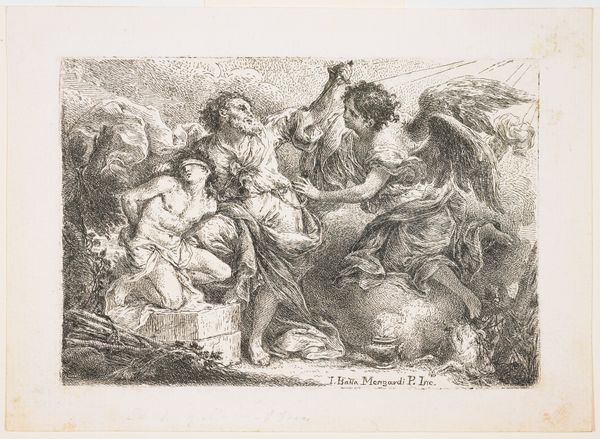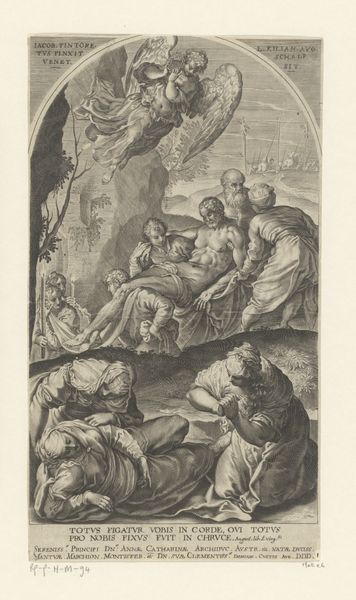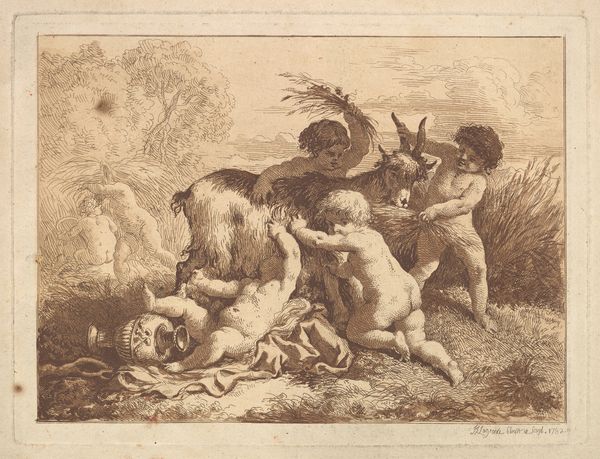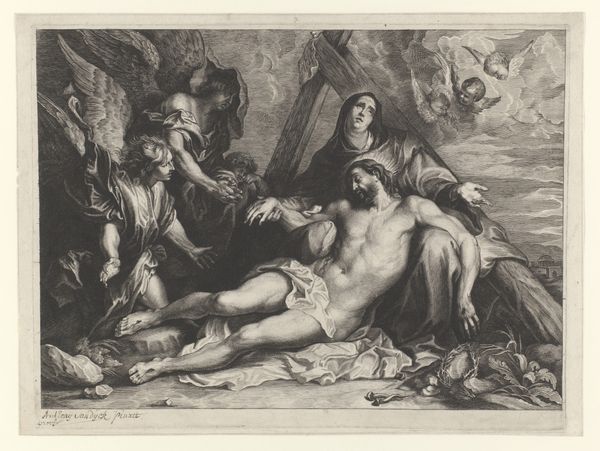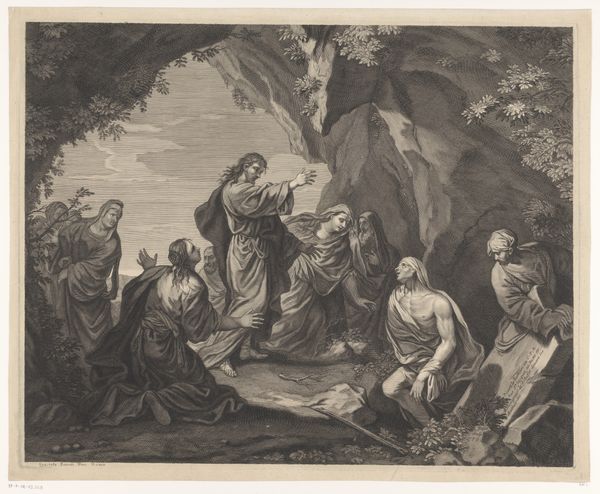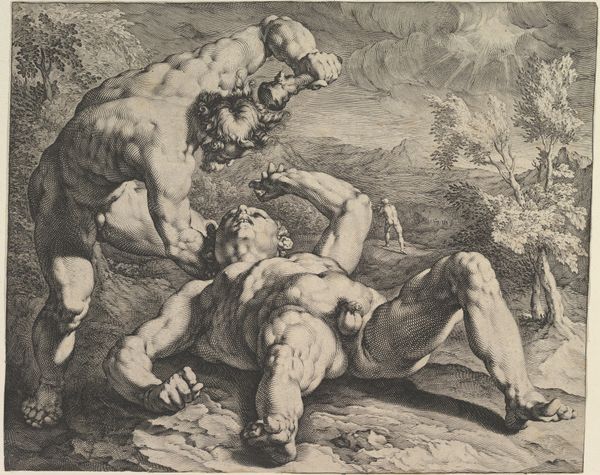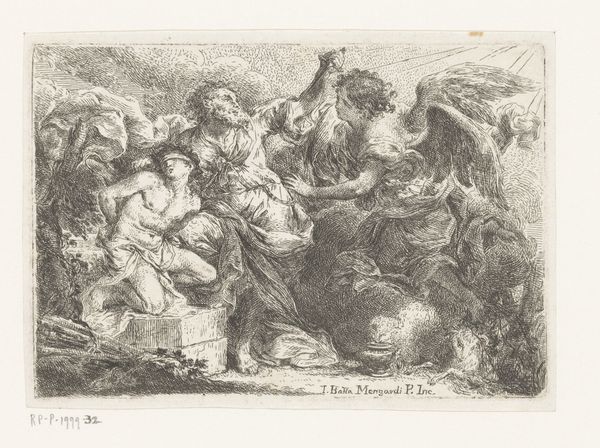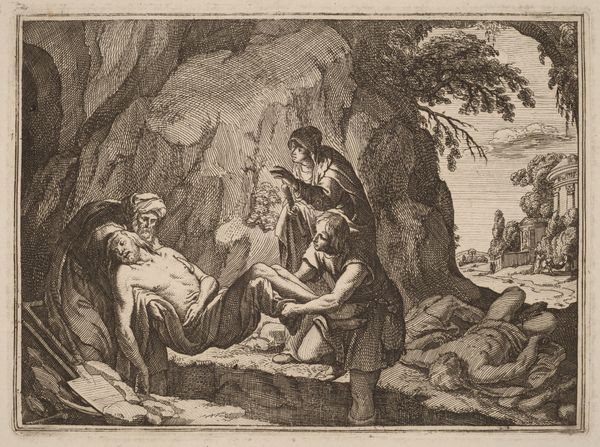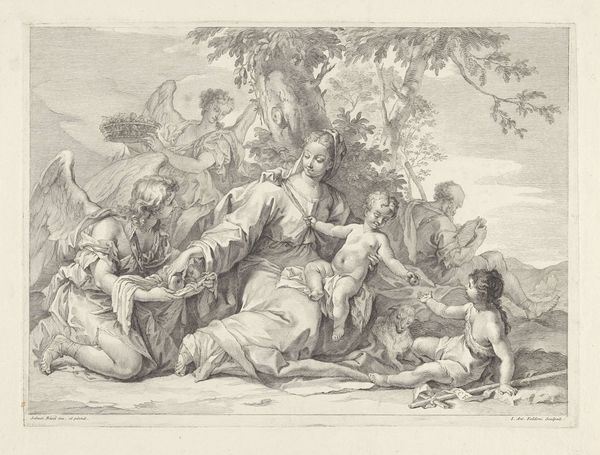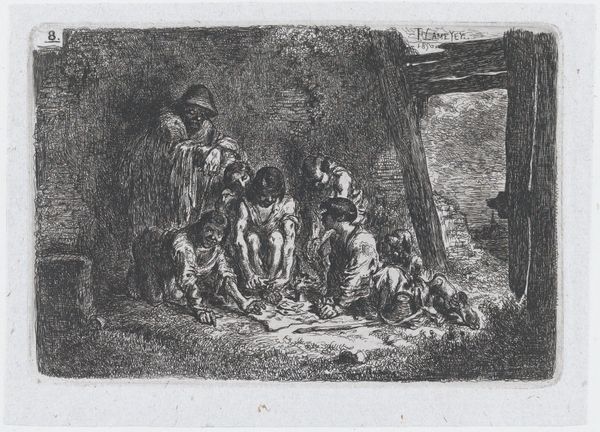
Dimensions: Sheet: 12 in. × 16 3/4 in. (30.5 × 42.6 cm) Plate: 7 7/8 × 11 in. (20 × 28 cm) Image: 5 11/16 × 7 7/8 in. (14.5 × 20 cm)
Copyright: Public Domain
Editor: Here we have Delacroix’s "La Pietà", created as a print in 1852, now housed at the Met. It’s a powerful depiction of grief, and what strikes me is how theatrical the composition is, almost like a stage. What do you see in this work? Curator: That’s a keen observation about the theatricality! I see Delacroix tapping into a long history of Pieta imagery, a tradition deeply embedded in Western religious and artistic culture. Think about the social and political function of this image in 19th-century France, decades after the Revolution. How might a deeply emotive religious scene like this resonate with a society still grappling with profound upheaval and searching for stability? Editor: So, you're saying it’s more than just religious devotion; it's about societal healing? Curator: Precisely. Delacroix, known for his Romanticism, uses the historical and religious symbolism to speak to contemporary anxieties. Notice the line work; it's not just about depicting a scene, but evoking raw emotion and communal sorrow. How does that aesthetic contribute to the political impact, do you think? Editor: I guess that the drama pulls people in. It makes a well-known story newly relatable. Seeing familiar faces react in a raw, relatable manner encourages compassion, prompting viewers to look inward and connect on a deeper, maybe even spiritual level. Curator: Exactly! And remember that art, particularly prints like this, had a public role. They circulated ideas, shaped sentiments, and reinforced cultural narratives. This Pieta, therefore, engages with faith and history while also intervening in the socio-political landscape of its time. It makes us reflect on the powerful roles art plays in shaping a society’s collective memory and values. Editor: That's fascinating, I hadn't considered its active role in society beyond the aesthetic aspect. Thank you! Curator: It was a pleasure! Always remember that artworks are not just pretty to look at, but they have agency and impact far beyond the gallery walls!
Comments
No comments
Be the first to comment and join the conversation on the ultimate creative platform.
